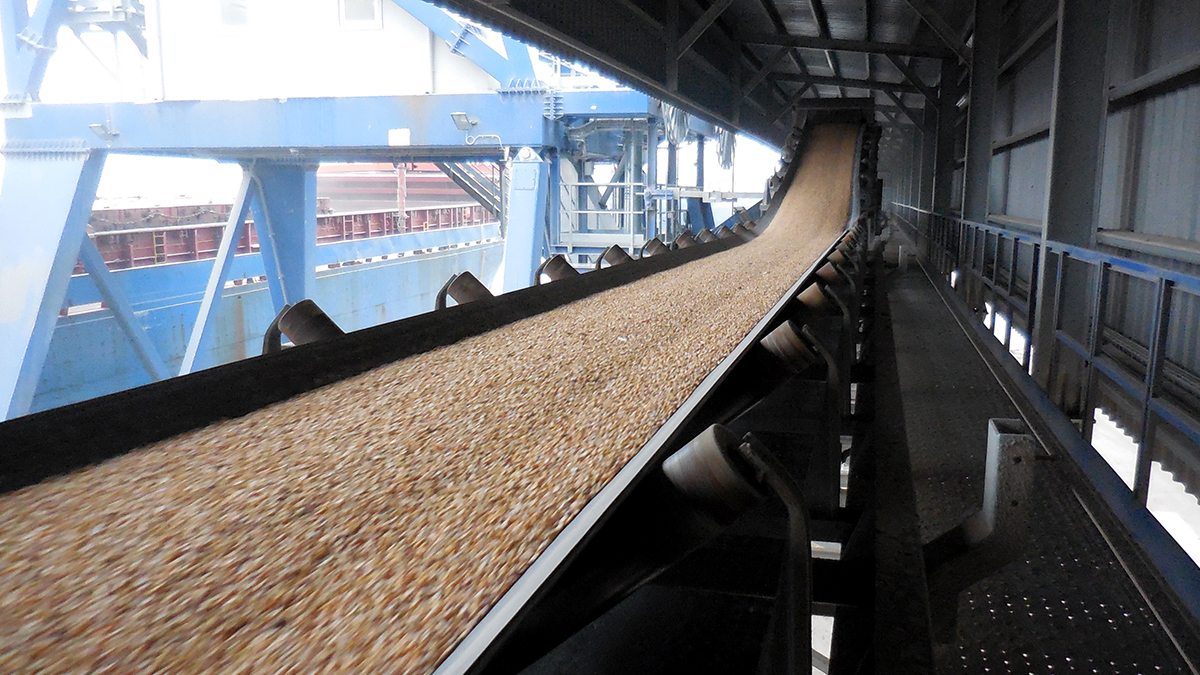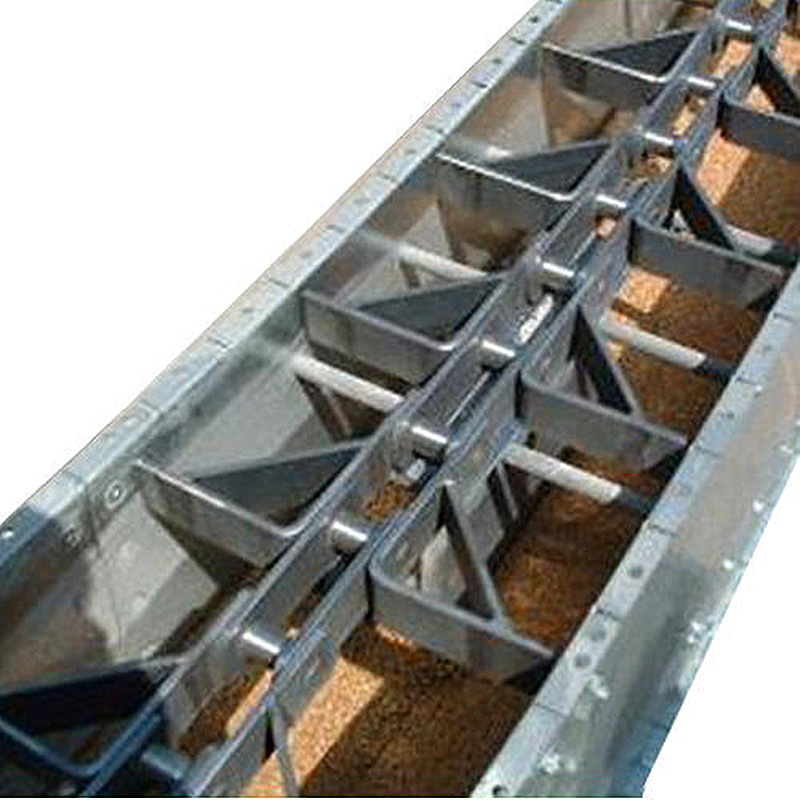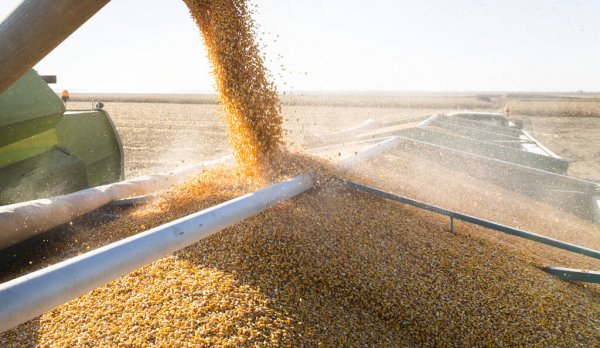Belt Conveyors
Belt conveyors are typically used to transfer grain horizontally. Inclines up to 15° are possible - and even up to 30° with ribs fitted to the belt. Belt conveyor capacity is high, and grain can be loaded or unloaded anywhere along the belt. Belt conveyors do not damage the grain and raise little dust.
The function of these belts is to convey the product that is handled to and from the bins in which it is stored. The quantity of product as well as the period during which it has to be delivered or dispatched will largely determine the number and maximum capacity of the conveyor belts.
The general standard requires at least two intake belts, each with a maximum capacity of 80 – 150t/hour as well as two reclaim belts below or beside the bins with a maximum capacity of 100 – 150t/hour, be used.
Sometimes additional conveyor belts are installed for use during drying or recirculation. The general operation of most conveyor belts used in the storage industry is based on the following principles:
- The belt is propelled by means of friction between the bottom of the belt and the drive pulley which rotates by means of a gear box and electric motor combination. In order to obtain maximum friction, the belt’s area of contact with the pulley should be as large as possible and therefor, a snub pulley is often used with the drive pulley.
- When the belt becomes very long and the load very big, the drive pulley is sometimes coated with a special rubber layer in order to increase the friction between the belt and the drive pulley.
- In order to transport the maximum quantity of product and reduce wastage, the top of the belt is kept in a trough shape by means of trough idlers which are supported by steel stringers.
- The most common trough used varies between 27° and 35° from horizontal. The trough idlers serve as support for the belt and the distances between them are determined by the thickness of the belt and the size of the load. The part of the belt which returns empty is supported by flat or return idlers. In order to facilitate the training of the belts, vertical side idlers are used.
- Most belts are made of nylon and tend to stretch after a while, they must periodically be adjusted either manually or by means of an automatic weight adjustment. Should the belt become too slack it may slip on the drive pulley and not convey the product. The adjustment or take-up unit is attached to the end pulley.

Click here to view a video that demonstrates conveyer belt used in grain.
Click here to view a video that explains tension on a conveyer belt.
Chain Conveyors
As in the case of belt conveyors, the function of the chain conveyor is to convey the product horizontally or at an incline from one place to another storage area. Chain conveyors can be used for conveying product within confined areas at an inclination greater than 15° and where cladding over a conveyor belt would be uneconomical. The fact that it is an enclosed system that would not cause dust problems, it may be an important factor to consider when you have to consider whether to install a conveyor belt or a chain conveyor. Due to the fact that the chain and flights are fairly heavy, the power consumption of a chain conveyor is approximately 3 to 5 times higher than that of the equivalent belt conveyor.
Although there are several different types of chain conveyors on the market, they operate on the same basic principles. The chain conveyor usually comprises a tensioning and a drive end and the intermediate casing. The tensioning and drive ends are considerably larger than the middle part, particularly where the chain has to convey product at an incline. This is mainly to ensure that the flow of the product, which is critical in this case, is not interfered with. The entire chain conveyor casing is usually manufactured from 3mm thick steel plate whereas the bottom plate is made entirely or partially from specially hardened steel, approximately 6mm thick. The chain sprocket, bushes, as well as the chain links and conveyor strips, are usually manufactured from specially hardened steel or a similar material in order to ensure a long-life expectancy.
The drive station is always situated at the front of the chain thereby placing the tension on the bottom part of the chain. The return chain runs back in the upper part of the casing and is supported by hardened supporting rollers or lateral supports.
All ball-bearings are provided with grease at the factory and require no further maintenance. The chain itself draws along only a small portion of the grain whereas the largest portion of the grain is transported as a result of friction between the grain mass and the grain pulled along by the chain. When the chain conveys product, it moves approximately 20mm above the bottom plate so that friction is no problem. When the chain runs empty, however, it moves directly on the bottom plate so that friction, and consequently wear and tear, are considerably greater.

All chain conveyors are normally supplied with a safety device at the drive station to prevent overloading or blockages. It may happen that the equipment into which the chain conveyor is feeding product is unable to cope with the volume of product thereby blocking back into the chain. This layer of product now blocks the chain conveyor but forces out the spring loaded flap at the drive end of the chain which in turn activates a limit switch which then cuts off the supply of product. The supply of product may be continued automatically when the flap falls back and disengages the limit switch.
Where the chain conveyor has more than one outlet, it is equipped with a special chain with return buckets situated at distances of approximately 3m. These buckets transport the product that has not fallen through the outlet back to the starting point of the chain.
Most chain conveyors are also provided with the necessary sweeper brushes which are usually of the following types:
- Sweepers are placed at a certain distance from each other on the flights, scrape the bottoms clean of any product which has remained behind.
- Sweepers placed on all outlets to wipe off product lying on top of the chain.
- A sweeper in front of the drive-end wipes off product that may have remained on the chain before it passes over the drive-end sprocket.
Click here to view a video that demonstrates how a chain conveyor works.
Auger (Screw Conveyors)
A screw conveyor or auger is an all-steel construction made up of a hollow shaft with a weld on flight ribbon suspended on support bearings at the end plates mounted in a U-trough or tubular housing. Inlets and outlets can be at any point along the length of the screw conveyor with an outlet at the discharge end. A short, reversed flight is fitted between the outlet’s far edge and the flights end plate. For trough screw conveyors, a hinged flap plate is fitted above the outlet connected to limit switch to stop motor whenever outlet is blocked or full of grain. The U-trough is provided with a removable top cover. For long screw conveyors, the hollow shaft is suspended in hanger brackets at suitable intervals along its length. The flights on the hollow shaft can either be left or right-handed, and of uniform, variable or tapering pitch.
Inlets and outlets can be at any point along the length of the screw conveyor with an outlet at the discharge end. A short, reversed flight is fitted between the outlet’s far edge and the flights end plate. For trough screw conveyors, a hinged flap plate is fitted above the outlet connected to limit switch to stop motor whenever outlet is blocked or full of grain.
Screw conveyors are of modular design and construction with short pieces being joined together to form the required length. Trough screw conveyors are available in trough diameter of between 100 – 500mm while tubular screw conveyor and augers are available in the diameter range of 100 – 500mm. In operation, grain is fed into the conveyor and pushed by the rotating flight towards the outlets, direction of flow being dependent on whether the flight is left or right-handed. Trough screw conveyors are rated to run at 40 – 50% full.
Auger elevators are one of the cheapest methods of elevating grain and can be fixed or portable. These are available in a wide range of lengths and capacities and are usually powered by an electric motor. They are comparatively light in weight, dependable in operation and popular due to good portability. Long augers may be mounted on wheels for easy transport. The angle of operation is adjustable, but the capacity declines as the auger is raised. High moisture content in grain also reduces the capacity of the auger. Old augers with worn flighting can damage split-prone grain.
The function of the screw conveyor is similar to belt conveyors and chain conveyors; however, the screw conveyor can be used at steeper inclines to move product. Belt and chain conveyors are normally used to transfer product at longer distances, whereas screw conveyors have the advantage of transferring product at very short distances.
Screw Conveyors, feeders and dischargers are an essential part of many storage and processing dealing with powdered or granular materials. They are commonly used for general movement and distribution of bulk materials as well as for bulk intake, silo discharge and hopper discharge applications.

Grain Auger